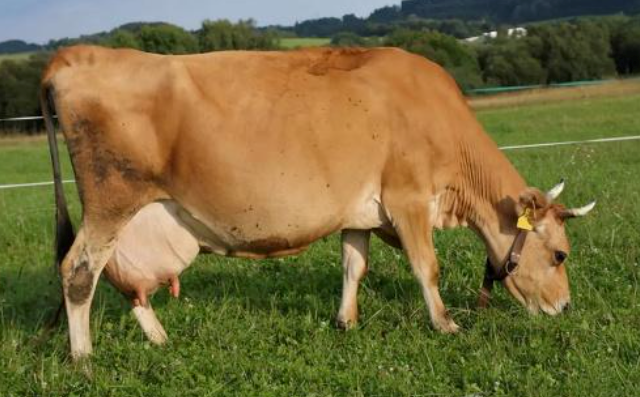Efficient reproductive management in cattle begins with a deep understanding of the bovine estrous cycle, which plays a key role in determining the best timing for artificial insemination, pregnancy diagnosis, and herd fertility planning.
The Basic Patterns of the Estrous Cycle
The estrous cycle of a cow typically lasts 18 to 24 days, with an average of around 21 days. This cycle can be divided into two main phases: the luteal phase and the follicular phase.
The luteal phase lasts approximately 17 days, during which the corpus luteum on the cow’s ovaries secretes progesterone to help maintain the uterine environment and prepare for a possible pregnancy.
The follicular phase is relatively short, lasting only 3 to 4 days, during which the follicles in the ovaries begin to develop and eventually release a mature egg.
For example, after the cow’s oestrus cycle ends, ovulation typically occurs within 10 to 15 hours, and the diameter of the mature follicle is generally between 13 and 19 millimetres.
Practical application of ultrasound examination
Many farmers now use veterinary ultrasound machines to observe the condition of cows’ ovaries. For example, Dawei Pet’s equipment can directly observe changes in follicles and corpus luteum through a rectal probe. When follicles develop to the point of imminent ovulation, they appear as round structures with smooth edges on the ultrasound image, and a diameter exceeding 13 millimetres indicates near maturity. Corpus luteum appears as an irregular mass of tissue on bovine ultrasound and typically forms after ovulation. This examination method helps farmers more accurately determine the optimal breeding window to avoid missing the optimal timing.
Estrus Behaviour and Monitoring Techniques
Estrus in cows typically lasts 12 to 21 hours, during which there are noticeable behavioural changes, such as excitement, mounting other cows, and vulvar swelling. However, some cows may remain quiet, making visual observation alone prone to missing signs. In such cases, ultrasound monitoring of follicle size or rectal palpation to assess ovarian condition can be combined. For example, palpating a soft, elevated follicle on the ovary may indicate entry into the ovulation phase. If a cow fails to exhibit oestrus for an extended period, nutritional status or the presence of uterine diseases should be investigated.
Post time: Jun-26-2025




